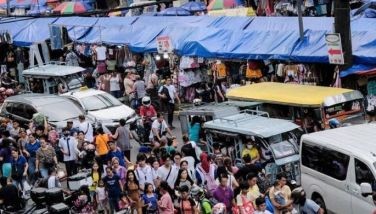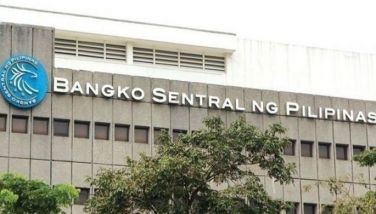Manila household income among fastest growing in AsPac by 2027

MANILA, Philippines — Manila is among the cities expected to lead household income growth in Asia-Pacific and see an increase in middle-income households by 2027 due to the continued improvement in productivity, according to think tank Oxford Economics.
In a report, Oxford Economics senior economist Scott McEwan said Manila, Ho Chi Minh City in Vietnam as well as Hyderabad and Bengaluru in India are leading the region’s rankings of most important cities in terms of household income growth, which is driving the increase in households classified as either middle or high-income.
He said the growth in real average household incomes in Manila, Hyderabad and Bengaluru is expected to increase by close to 30 percent by 2027, while growth in six major cities of China is projected to be close to 20 percent.
“In the case of Ho Chi Minh City and Manila, the proportion of households in the middle-income brackets is set to increase by over 10 percentage points over the next five years,” he said.
He said Manila, like Chinese cities Beijing, Shanghai, Shenzhen and Guangzhou, is expected to have over 500,000 additional middle-income households by 2027.
Middle-income households are those with real average annual household disposable incomes of $20,000 to $70,000.
As cities grow richer, McEwan said many households are moving into higher income brackets and seeing increased spending power.
“Driving the pace of income growth over the forecast horizon is productivity growth, which is vital in terms of translating economic expansion into rising living standards,” he said.
He said real output per worker in Asia-Pacific emerging cities, which grew rapidly over recent decades excluding the pandemic years, is expected to continue to rise.
By 2027, the think tank expects productivity levels in the region’s emerging cities to be more than 50 percent higher than in 2015.
McEwan said a major component of the productivity projections is the allocation of labor and capital within the cities to higher value sectors.
“Across the emerging cities, their economies are pivoting towards services sectors such as finance, information and communications, and business services, or the cities are moving their manufacturing bases up the value chain to higher value products,” he said, noting these sectors are driving the economic growth of Asia-Pacific’s emerging city-economies.
As the number of middle-income households increase in the region’s emerging cities, he said consumption spending in these cities is also forecasted to grow by an average of 6.6 percent per year until 2027.
“Overall, we expect real consumer spending levels to be almost 40 percent higher in 2027 than in 2022,” McEwan said.
The growth in middle-income households in Asia-Pacific is also expected to lead to changes in consumption, with discretionary spending categories such as hospitality and recreation forecasted to outpace basic goods such as food and beverages, housing and clothing.
- Latest
- Trending





























